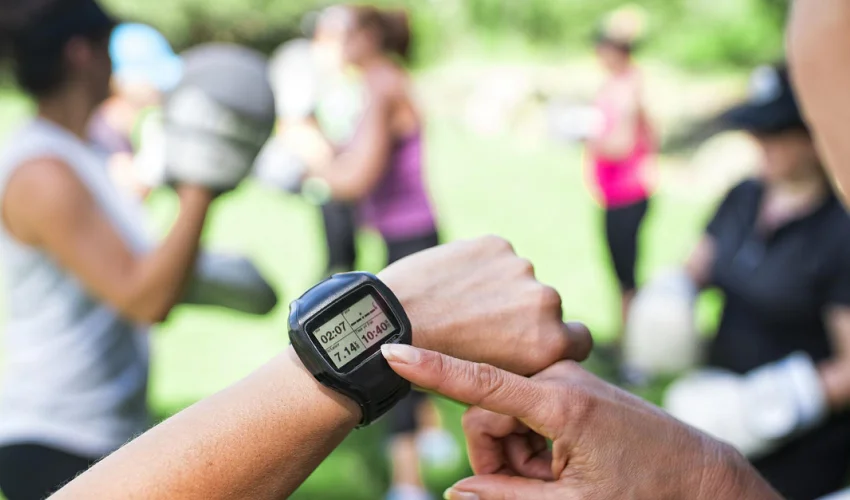Living with diabetes requires careful management of various aspects, including diet, medication, and physical activity. Among these, physical activity plays a crucial role in managing blood sugar levels, improving overall health, and reducing the risk of complications. Incorporating regular exercise into daily routines is essential for diabetic patients and can significantly contribute to their well-being. This article aims to provide comprehensive information and guidance on incorporating physical activity into the daily routines of diabetic patients and their caregivers.
Understanding the Importance of Physical Activity for Diabetic Patients
Physical activity offers numerous benefits for diabetic patients, promoting overall health and well-being. It not only helps manage blood sugar levels but also reduces the risk of complications and improves cardiovascular health. Here are some key reasons why physical activity is important for diabetic patients:
The Benefits of Physical Activity
Engaging in regular physical activity provides several benefits, such as:
- Improved blood sugar control
- Increased insulin sensitivity
- Weight management
- Enhanced cardiovascular health
- Reduced risk of heart disease
- Lower blood pressure and cholesterol levels
- Improved mood and mental well-being
The Impact on Blood Sugar Levels
Physical activity helps lower blood sugar levels by increasing glucose uptake in the muscles, reducing insulin resistance, and enhancing insulin sensitivity. Regular exercise can lead to more stable blood sugar levels throughout the day, reducing the reliance on medication and insulin.
Reducing the Risk of Complications
Regular physical activity can lower the risk of diabetic complications, including cardiovascular disease, neuropathy, retinopathy, and kidney disease. Exercise helps improve blood circulation, reduce inflammation, and promote overall health, mitigating the impact of diabetes on various organs.
Improved Cardiovascular Health
Heart disease is a significant concern for diabetic patients. Physical activity strengthens the heart, improves circulation, lowers blood pressure, and reduces the risk of heart disease and stroke. Engaging in aerobic exercises, such as walking, swimming, or cycling, can greatly benefit cardiovascular health.
Enhancing Weight Management
Maintaining a healthy weight is crucial for diabetic patients, as obesity can worsen insulin resistance. Physical activity helps burn calories, build muscle, and regulate appetite, supporting weight management efforts and reducing the risk of obesity-related complications.
Boosting Mental Well-being
Living with diabetes can sometimes lead to emotional stress and anxiety. Physical activity promotes the release of endorphins, the “feel-good” hormones, which can help reduce stress, boost mood, and improve mental well-being. Regular exercise also aids in better sleep patterns, further contributing to overall mental health.
Tailoring Physical Activity to Individual Needs
It is essential to tailor physical activity to the individual needs of diabetic patients. Here are some important considerations when incorporating exercise into daily routines:
Consultation with Healthcare Professionals
Before starting any exercise program, diabetic patients should consult their healthcare team. Healthcare professionals can provide personalized recommendations based on the patient’s overall health, fitness level, and diabetes management goals.
Determining Current Fitness Level
Assessing the current fitness level helps establish a baseline and set realistic goals. This can be done through simple exercises, such as walking tests or monitoring heart rate response during activity.
Setting Realistic Goals
Setting achievable goals is important to maintain motivation and prevent burnout. Start with small, attainable targets and gradually increase the intensity, duration, and frequency of exercise over time.
Considering Medical Conditions and Medications
Some medical conditions or medications may affect the type and intensity of physical activity. It is crucial to discuss any underlying conditions or medications with healthcare professionals to ensure exercise safety.
Adapting to Physical Limitations
Individuals with physical limitations or disabilities can still engage in physical activity. Depending on their abilities, they can explore modified exercises, adaptive equipment, or consult with physical therapists for guidance.
Types of Physical Activities Suitable for Diabetic Patients
A variety of physical activities can be incorporated into the daily routines of diabetic patients. It is important to combine different types of exercises to achieve a balanced and well-rounded fitness regimen. Here are some recommended activities:
Aerobic Exercises
Aerobic exercises, also known as cardio exercises, involve continuous movement that increases heart rate and breathing. Suitable options for diabetic patients include:
- Brisk walking
- Cycling
- Swimming
- Dancing
- Low-impact aerobics
Engaging in aerobic exercises for at least 150 minutes per week, spread across several sessions, can greatly benefit blood sugar control and overall health.
Strength Training
Strength training helps build muscle, improve bone density, and increase metabolism. Incorporate strength training exercises, such as:
- Resistance band exercises
- Bodyweight exercises
- Weightlifting (with proper guidance)
Strength training should be performed at least twice a week, targeting major muscle groups.
Flexibility and Balance Exercises
Flexibility and balance exercises help improve joint mobility, reduce the risk of falls, and promote overall flexibility. Consider incorporating activities like:
- Stretching exercises
- Yoga
- Tai Chi
- Pilates
Perform flexibility exercises at least two to three times per week, focusing on all major muscle groups.
Low-Impact Activities
Low-impact exercises provide cardiovascular benefits without putting excessive stress on the joints. They are particularly suitable for individuals with joint problems or limited mobility. Examples include:
- Water aerobics
- Stationary cycling
- Elliptical training
- Rowing
Low-impact activities can be performed daily or as part of a regular exercise routine.
Household Chores and Everyday Activities
Simple everyday activities can contribute to physical activity levels. Encourage diabetic patients to engage in tasks such as gardening, cleaning, taking the stairs instead of the elevator, or parking farther away to increase daily movement.
Strategies for Incorporating Physical Activity into Daily Routines
To ensure consistent physical activity, it is important to incorporate exercise into daily routines. Here are some strategies to make physical activity a habit:
Finding Opportunities for Exercise
Look for opportunities to be physically active throughout the day. Take short walks during breaks, use stairs instead of elevators, or engage in active hobbies like dancing or gardening.
Scheduling Exercise Sessions
Set aside dedicated time for exercise and treat it as an important appointment. Schedule workouts in the morning, during lunch breaks, or in the evening, whichever works best for individual preferences and commitments.
Breaking Sedentary Habits
Reduce sedentary behavior by incorporating movement breaks during prolonged sitting. Stand up, stretch, or take a short walk every hour to break up long periods of inactivity.
Making Physical Activity Enjoyable
Choose activities that are enjoyable and fit individual preferences. Join exercise classes, find workout buddies, or listen to music or audiobooks during workouts to make them more enjoyable and motivating.
Incorporating Exercise into Daily Tasks
Combine physical activity with daily tasks. For example, walk or bike to work, take the stairs instead of the elevator, or do simple exercises during TV commercial breaks.
Safety Considerations
Ensure safety during exercise by:
- Wearing appropriate footwear and clothing
- Checking blood sugar levels before and after exercise
- Carrying a source of fast-acting glucose in case of hypoglycemia
- Staying hydrated
- Starting slowly and gradually increasing intensity
Tips for Motivating and Supporting Diabetic Patients
Motivation and support from caregivers can greatly influence a diabetic patient’s adherence to physical activity routines. Here are some tips for caregivers to motivate and support their loved ones:
Setting Realistic Expectations
Encourage realistic goals and acknowledge the progress made by the patient, no matter how small. Celebrate milestones and provide positive reinforcement to maintain motivation.
Providing Emotional Support
Living with diabetes can be emotionally challenging. Provide emotional support, actively listen, and be empathetic to the patient’s feelings and concerns.
Joining Supportive Communities
Encourage diabetic patients to join support groups or communities where they can connect with others facing similar challenges. Sharing experiences and receiving encouragement can enhance motivation and provide a sense of belonging.
Celebrating Achievements
Celebrate achievements, whether they are related to improved blood sugar control, increased fitness levels, or overall health improvements. Recognizing and celebrating successes can boost motivation and reinforce positive behaviors.
Tracking Progress and Celebrating Milestones
Keep track of physical activity and blood sugar levels. Use tools like activity trackers, blood glucose monitors, or journals to monitor progress. Celebrate milestones achieved, such as reaching a specific number of workout sessions or meeting blood sugar targets.
Overcoming Common Barriers to Physical Activity
Several common barriers can hinder regular physical activity. Here are some strategies to overcome them:
Lack of Time
Encourage diabetic patients to break exercise sessions into shorter bouts throughout the day. Even brief periods of physical activity can be beneficial. Prioritize exercise by scheduling it into daily routines.
Limited Mobility
For individuals with limited mobility, explore seated exercises, chair yoga, or water-based activities that provide low-impact options. Consult with physical therapists or exercise specialists to find suitable exercises.
Fear of Hypoglycemia
Fear of low blood sugar during exercise can deter some individuals from being physically active. Advise patients to check their blood sugar levels before, during, and after exercise, and to carry a source of fast-acting glucose for potential hypoglycemic episodes.
Weather and Environmental Factors
Encourage indoor activities during extreme weather conditions or find alternatives, such as using home exercise equipment, going to a local gym, or utilizing workout videos and apps.
Balancing Work and Exercise
Work demands can make it challenging to incorporate physical activity into daily routines. Encourage active commuting, such as walking or biking to work, or fitting in short bouts of exercise during lunch breaks.
Table: Types of physical activities suitable for diabetic patients and their corresponding benefits.
| Type of Physical Activity | Benefits for Diabetic Patients |
|---|---|
| Aerobic Exercises | - Improved blood sugar control |
| - Increased insulin sensitivity | |
| - Weight management | |
| - Enhanced cardiovascular health | |
| - Reduced risk of heart disease | |
| - Lower blood pressure and cholesterol levels | |
| - Improved mood and mental well-being | |
| Strength Training | - Increased muscle strength and tone |
| - Improved insulin sensitivity | |
| - Enhanced bone density and metabolism | |
| - Weight management | |
| Flexibility and Balance | - Improved joint mobility and flexibility |
| Exercises | - Reduced risk of falls |
| - Stress reduction and relaxation | |
| - Improved posture and coordination | |
| Low-Impact Activities | - Cardiovascular benefits without joint stress |
| - Suitable for individuals with limited mobility | |
| Household Chores and | - Increased daily movement and calorie expenditure |
| Everyday Activities | - Improved overall fitness |
| - Incorporation of physical activity into daily tasks |
Precautions and Guidelines for Physical Activity
To ensure safe and effective physical activity, diabetic patients should adhere to the following precautions and guidelines:
Monitoring Blood Sugar Levels
Monitor blood sugar levels before and after exercise to identify patterns and adjust medication or food intake as needed. Maintain a log to track how different types and intensities of exercise affect blood sugar levels.
Adjusting Medications
Some medications, such as insulin or oral hypoglycemic agents, may need adjustment to prevent exercise-induced hypoglycemia. Consult with healthcare professionals to determine the appropriate timing and dosage of medications.
Adequate Hydration
Proper hydration is crucial during exercise. Encourage diabetic patients to drink water before, during, and after physical activity, particularly in hot or humid conditions.
Proper Foot Care
Diabetic patients should take care of their feet to prevent foot ulcers and other complications. Wear appropriate footwear, inspect feet regularly, and seek medical attention for any foot-related concerns.
Recognizing Warning Signs and Seeking Medical Attention
Educate patients on the warning signs of overexertion, hypoglycemia, or other complications during exercise. Encourage them to seek immediate medical attention if any concerning symptoms arise.
Sample Weekly Exercise Plan
Below is a sample weekly exercise plan for diabetic patients. Remember to personalize the plan based on individual fitness levels, preferences, and medical advice:
- Monday: 30 minutes of brisk walking
- Tuesday: Strength training (bodyweight exercises) for 20 minutes
- Wednesday: 30 minutes of swimming or water aerobics
- Thursday: Flexibility and balance exercises (yoga or tai chi) for 30 minutes
- Friday: 30 minutes of stationary cycling or elliptical training
- Saturday: Household chores (gardening, cleaning) for 30 minutes
- Sunday: Rest day or gentle stretching and relaxation exercises
Ensure that each exercise session begins with a warm-up and ends with a cool-down period. Modify the plan as needed to gradually increase the duration and intensity of exercises.
Incorporating physical activity into the daily routines of diabetic patients is a vital component of effective diabetes management. By understanding the benefits of exercise, tailoring activities to individual needs, and implementing strategies to overcome barriers, diabetic patients can experience improved blood sugar control, reduced complications, and enhanced overall well-being. The support and motivation provided by caregivers play a crucial role in ensuring long-term adherence to physical activity routines. By embracing an active lifestyle, diabetic patients can take charge of their health and lead fulfilling lives. Remember, always consult healthcare professionals for personalized advice and guidance.




